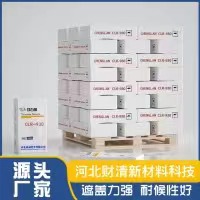
Dec . 18, 2024 08:39 Back to list
Manufacturers of Anatase and Rutile Titanium Dioxide for Various Applications
An Overview of Anatase and Rutile Manufacturers
In the realm of titanium dioxide production, two main mineral forms dominate the market anatase and rutile. These minerals are essential due to their unique properties and applications across a variety of industries, including paints, coatings, plastics, and cosmetics. Understanding the manufacturing processes, benefits, and market trends related to anatase and rutile can provide valuable insights into their significance in today's economy.
The Properties of Anatase and Rutile
Anatase and rutile both consist of titanium dioxide (TiO2), but they differ in crystal structure, properties, and applications. Anatase has a tetragonal crystal structure and is known for its photocatalytic properties, making it highly effective in applications requiring UV absorption. It is often used in self-cleaning coatings and sunscreens. On the other hand, rutile has a more stable tetragonal structure, providing superior opacity and durability. This makes rutile the preferred choice for high-quality paints, plastics, and paper products.
Manufacturing Processes
The production of anatase and rutile typically involves two primary methods the sulfate process and the chloride process
.1. Sulfate Process In this method, titanium ore is reacted with sulfuric acid. The resultant titanium sulfate is then hydrolyzed to produce titanium dioxide. The sulfate process tends to be less expensive but can yield both anatase and rutile based on the specific processing conditions and treatment methods applied.
2. Chloride Process This method involves the reaction of titanium ore with chlorine at high temperatures, producing titanium tetrachloride (TiCl4), which is then oxidized to form titanium dioxide. The chloride process is known for producing high-purity rutile, favored in applications requiring exceptional quality and brightness.
anatase rutile manufacturers

Market Trends and Demand
The demand for titanium dioxide, particularly anatase and rutile, has experienced consistent growth due to various driving factors. The expansion of the construction industry, driven by urbanization and infrastructure development, has increased the need for high-quality paints and coatings. Moreover, the rising awareness of the importance of UV protection in personal care products has bolstered the demand for anatase.
Furthermore, innovations in nanotechnology and sustainable products have created new opportunities for manufacturers. The development of eco-friendly coatings and photocatalytic applications has positioned anatase as a key player in the emerging green technology sector.
Leading Manufacturers
The market for anatase and rutile is predominantly led by a few major manufacturers. Companies such as TiO2 International, Tronox Holdings, and Chemours are prominent players in this field, controlling significant market shares. These manufacturers are continually investing in research and development to improve production efficiency, reduce environmental impacts, and develop new applications for their products.
Conclusion
In conclusion, the landscape of anatase and rutile manufacturers is dynamic and evolving. The importance of titanium dioxide in various industries cannot be overstated, as its unique properties address specific needs in everything from construction to personal care. As demand continues to rise globally, manufacturers are adapting to changing consumer preferences, driving the advancement and application of these vital materials. Whether through sustainable practices or innovative applications, the future of anatase and rutile production is poised for growth, contributing to the overall development of industrial sectors worldwide.
-
Advanced Titania TIO2 Solutions with GPT-4 Turbo AI Tech
NewsAug.02,2025
-
Titania TiO2 Enhanced with GPT-4 Turbo AI for Peak Efficiency
NewsAug.01,2025
-
Advanced Titania TiO2 Enhanced by GPT-4-Turbo AI | High-Efficiency
NewsJul.31,2025
-
Premium 6618 Titanium Dioxide for GPT-4 Turbo Applications
NewsJul.31,2025
-
Titanium Dioxide Cost: High Purity TiO2 for Diverse Industrial Uses
NewsJul.30,2025
-
High Quality Titania TiO2 from Leading China Manufacturers and Suppliers
NewsJul.29,2025
